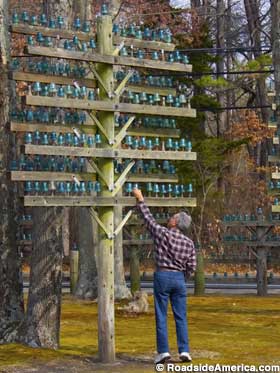Unlike previous generations of automatic train control, the on board PTC software has as much if not more to do with the operational impact of the safety system than fixed infrastructure like code rates and block length. In the case of ACSES, Amtrak's PTC implementation, track mounted transponders conveys data about upcoming civil speed limits, grades and positive stop points and it is up to the on board system to develop a braking curve. In theory this curve should represent the maximum braking effort the rail vehicle is capable of if tripped by the PTC system to prevent an unsafe level of overspeed. The concept of a penalty brake application exists for thus purpose as a full on emergency application requires some additional inspections. (Although I have been present when the "freight" ETMS PTC system threw my Amtrak train into emergency.)
Four years ago I benefited from a SEPTA training run to capture two videos of how their PTC implementation functions and the braking curve was ridiculously bad. Granted I lack similar curve information for other operators, but the SEPTA engineer could stay under the curve with a very mild brake application. I got some comments on the order of "PTC is new and SEPTA will inevitably made modifications to improve the performance." Well on my most recent winter SEPTA fan trip I lucked into another training run on the Airport Line and I can report that the system has not been changed and it still causing significant delays.
Unfortunately I was only able to capture video of the cab display unit returning from the Airport to Eastwick which had no PTC speed downgrades and therefore no demonstration of the braking curve (although I did capture a missed transponder reading). In fact my inability to get a video angle was doubly unfortunate because the braking curve is so conservative that it caused the engineer to trigger a penalty brake application just north of PHIL interlocking's southbound home signal. This is where the line speed of 45mph transitions to 30mph for the Airport Line curve just south of PHIL interlocking. (Even before ACSES this curve was protected by a 45mph Approach Medium cab signal) This meant that the on board system calculated a braking distance of about 4500 feet to slow from 45mph to 30mph.
Time for some math. The starting velocity is 66 fps and final velocity is 44fps. From my observations the braking "curve" is linear which gives us an average speed of 55fps and thus a deceleration time of 81 seconds. This lets us solve for acceleration with a solution of 1.38fps^2 or 0.9 mphps, which is an absolutely pathetic braking rate. Even if I assume I was wrong about where the speed curve kicked in and the penalty took place just after the limits of PHIL interlocking, 2800 feet from the restriction, the resulting deceleration rate is still 1.4 mphps, less than half of the design acceleration rate of 3 mphps.
In this example we have the two bugaboos of PTC working together to sap performance on what should be a speedy trip to the airport. The first is a stacked safety margin. The older ATC system enforced a 45mph limit on approach to and around the 30mph curve. That would have been a rough ride and close to the overturn speed, but would likely be enough to prevent a derailment without getting in the way of the engineer. Today the ACSES takes the 30mph as gospel even though that figure already accounts for human error. Next, the conservative braking curve compels a speed reduction about three times farther away than would be necessary with the full braking force available. The end result is net gain of 10 seconds to traverse the same 4500 foot distance and you can see why this is a problem. 10 seconds isn't much. It's certainly not enough for anyone to fight for or risk being blamed for if something goes wrong. unfortunately this 10 second loss happens again and again and again over the course of a run with the end result of SEPTA having to lengthen scheduled running times by an average of 4 minutes across all of its lines. Add in more small delays like low maximum speeds, long dwell times, slow terminal operations and voila, rail transport is uncompetitive with private road transport.
As you can see in the above video SEPTA cares very little about speed in general. As seen in the video about, the R1's 4-station airport terminal complex has blanked Restricted speed limit, even when approaching CP-AIRPORT JCT after passing a wayside automatic distant displaying Approach Limited. Why even bother with the wayside at that point! Prior to ACSES, SEPTA had plans to use the 4-speed cab signaling system to implement rapid transit style signaling when Rule 562 operation was installed on its Reading territory. Maybe we'll see a realization similar to NYCTA's that speed improvements, even small ones do matter. Or maybe we'll see the response to poor post-COVID ridership to be service cuts.







